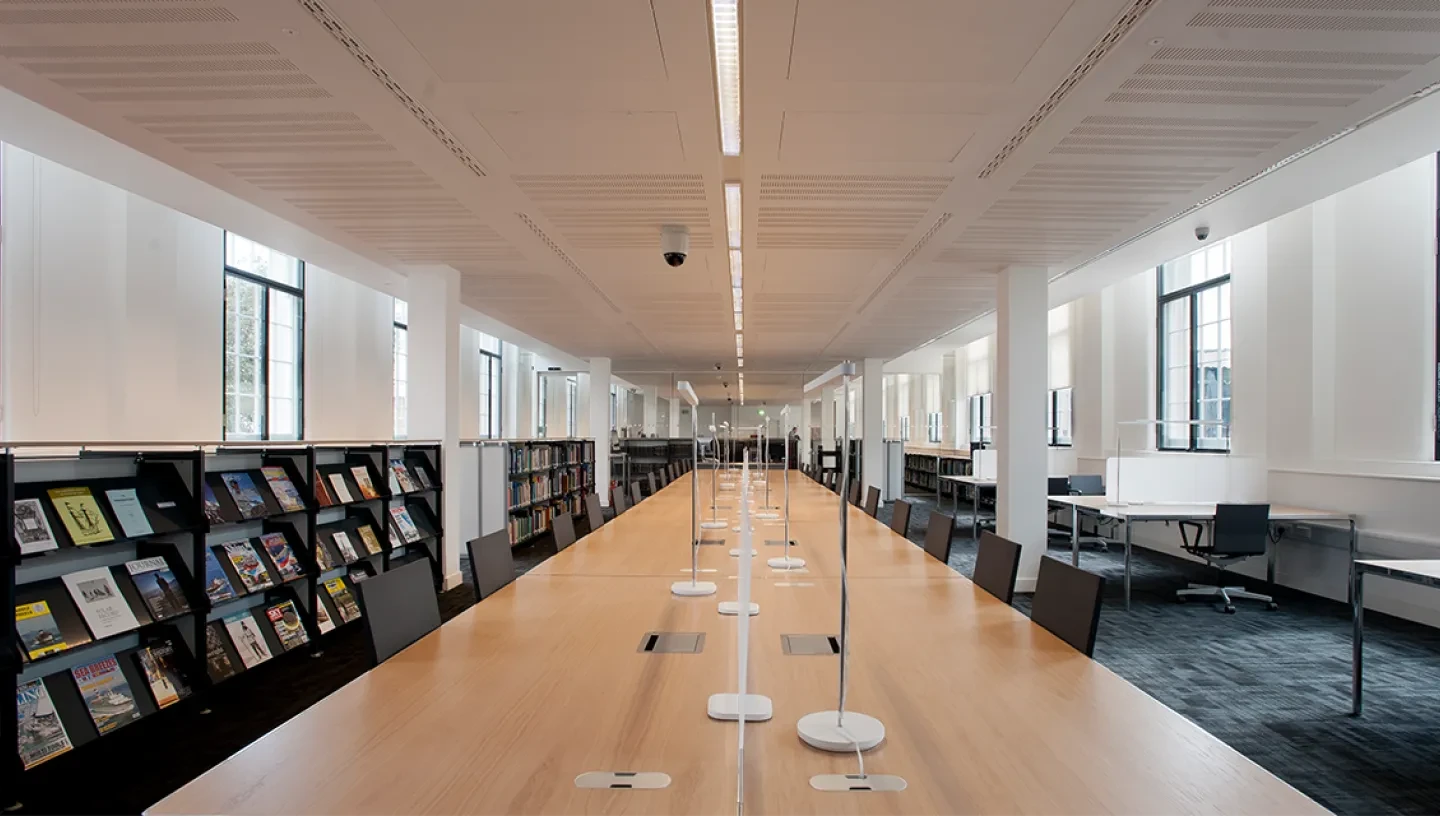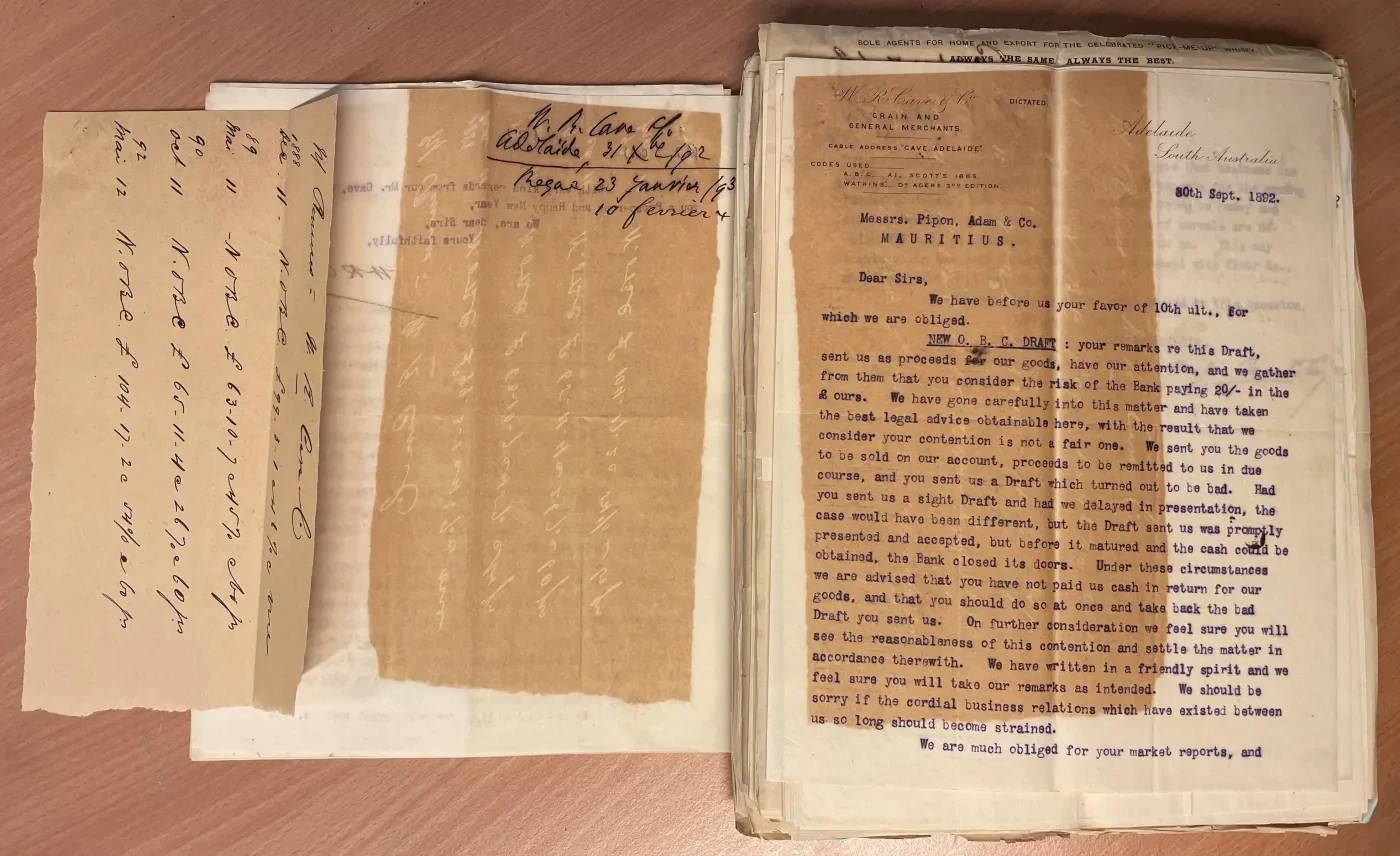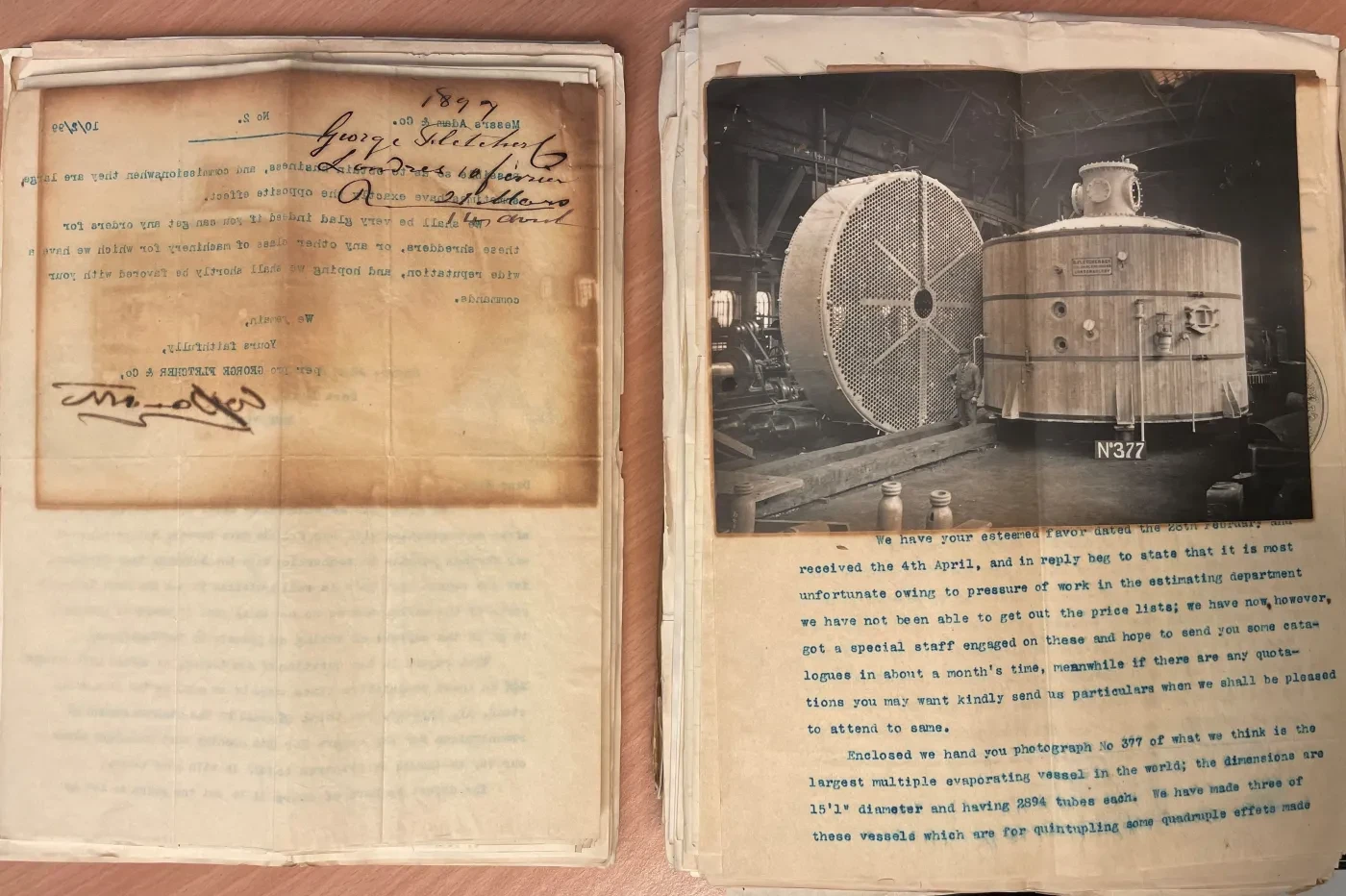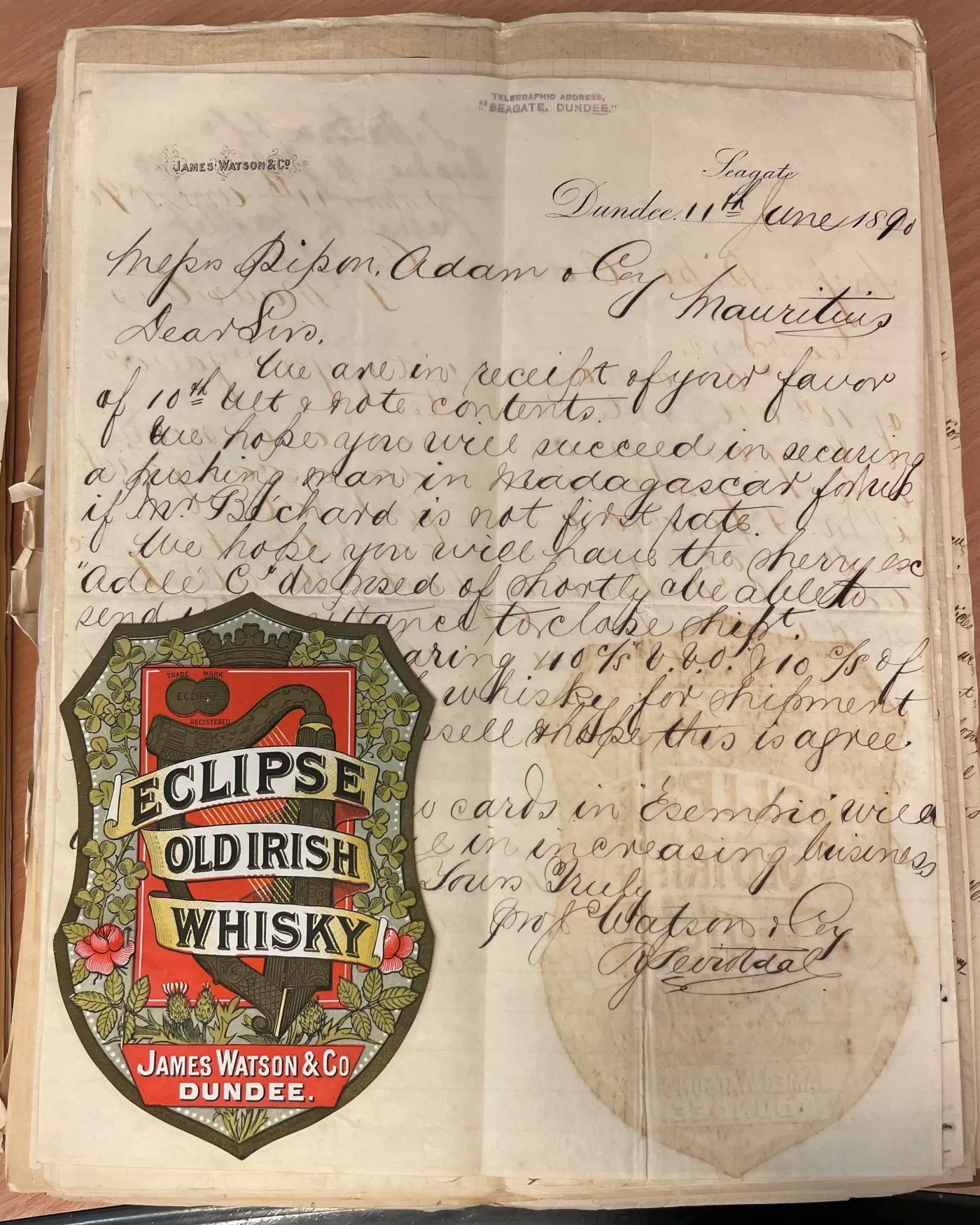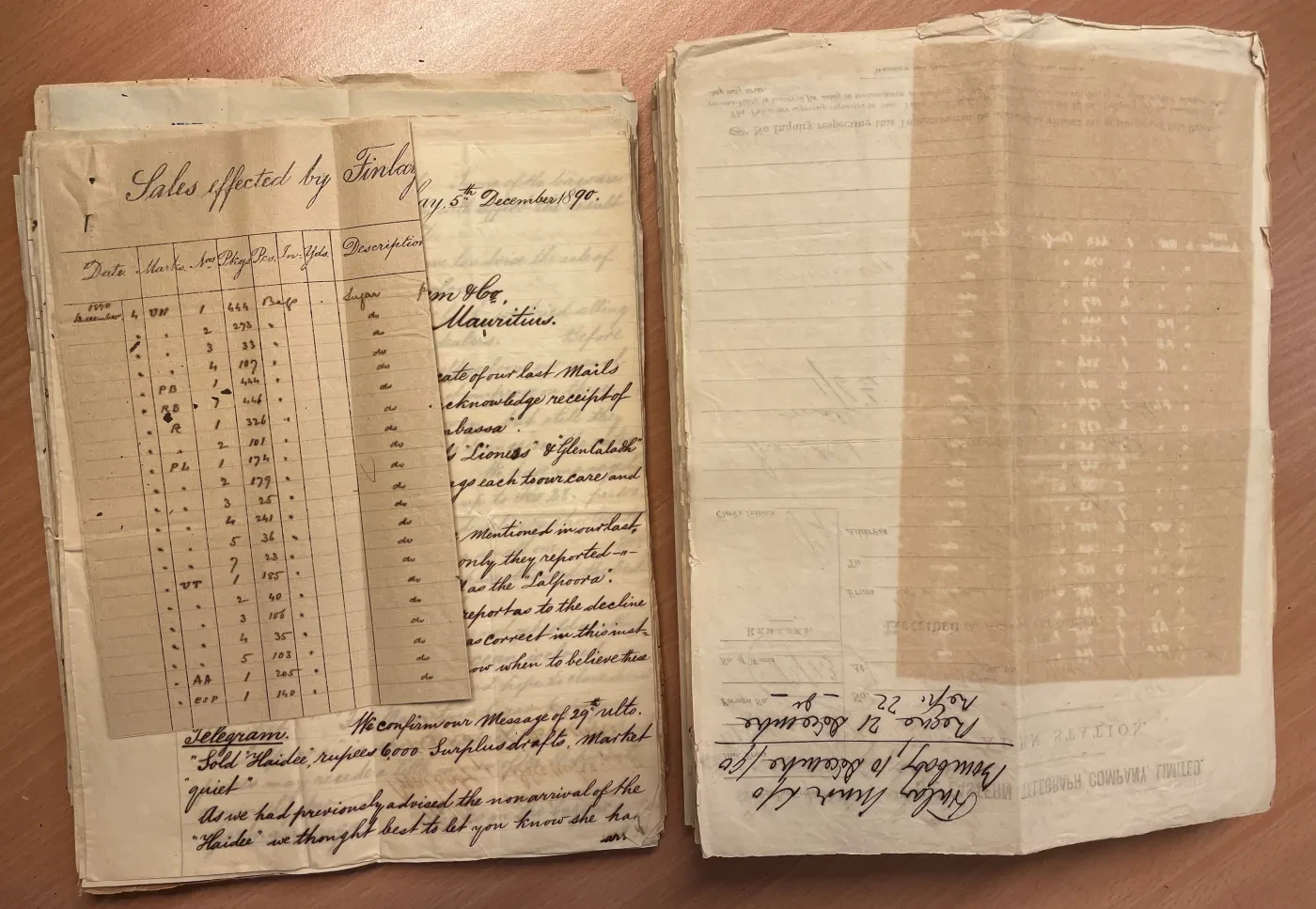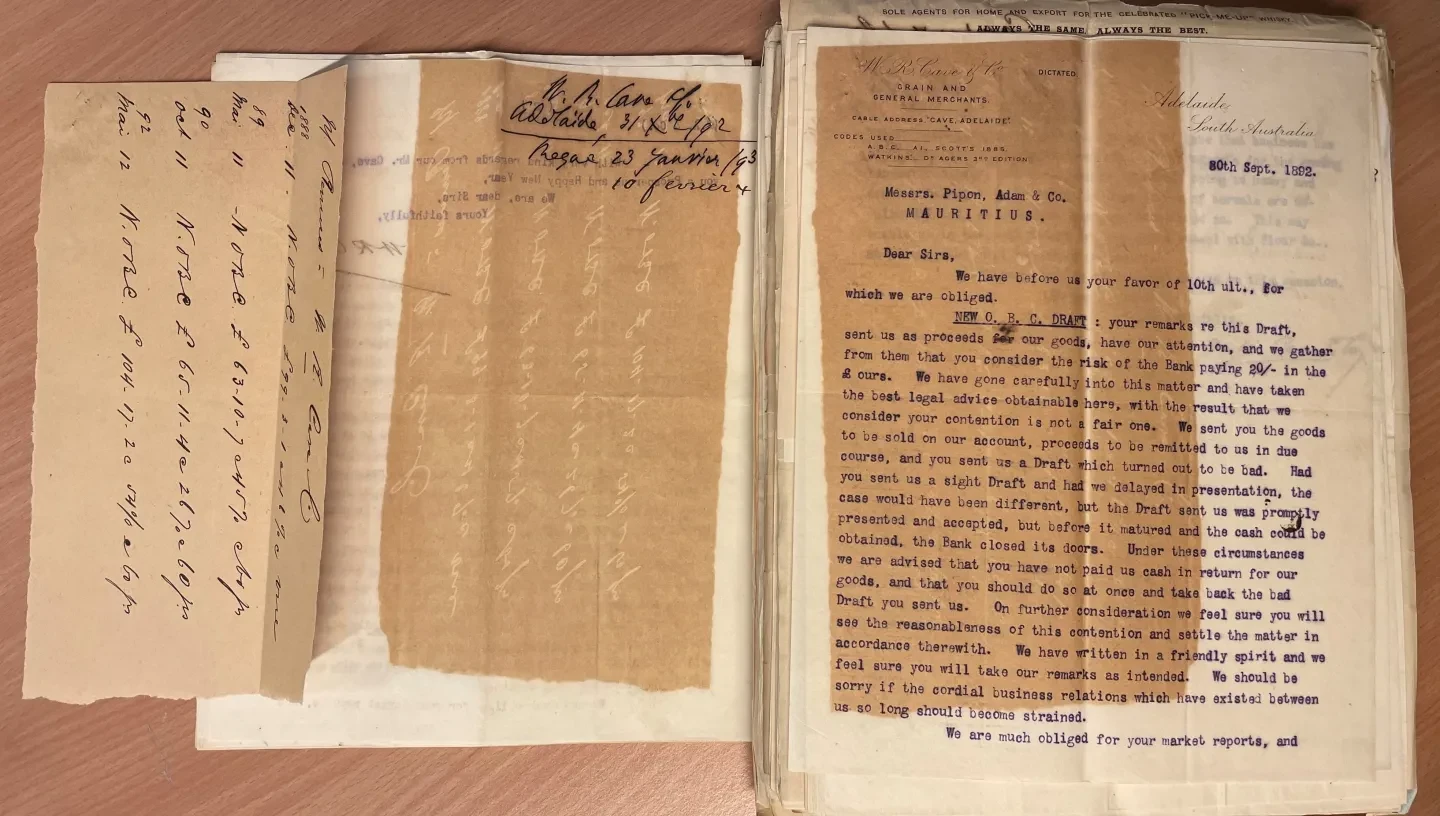
Find out why centuries-old papers often look so much better than decade-old ones.
These images are examples of late nineteenth century papers from the Adam & Co. business collection (RMG reference: AAM). The condition of this collection, whose dates roughly span the entire Victorian era, seems to get worse chronologically, which seems counterintuitive.
The reason for the poorer condition of the newer papers is the industrialisation of the papermaking process. The sheer volume of paper required by Victorian businesses meant paper had to be made cheaper and more abundant than ever before, so the raw materials needed to reflect this. Trees were the solution, and the age of wood-pulp paper was born.
This, however, presents a conservation challenge due to the wood pulps' self-destructive nature, breaking itself down gradually due to its acidic content in a reaction called acid hydrolysis. This reaction is further exacerbated by the presence of moisture and pollutants in the air. The acid comes from the wood itself, but also the size (diluted glue), that holds the fibres together, which often contained aluminium sulphate.
The paper gradually gets darker and more brittle, and takes on that familiar, slightly sour old book smell. Before wood pulp was introduced, papers were made with cotton or linen pulp, which is not acidic, and the size they used also happened to be much more chemically stable, which is why documents from the pre-industrial era look so good for their age.
Sometimes, as you can see in these images, the acid slowly leaks out of wood pulp papers and has a destructive impact on adjacent pages, staining them brown. The images also show how some inks and pigments act like a sort of sun block.
It is our job as custodians of these documents to try and slow this acid hydrolysis process down as much as possible, without compromising the coherence of a collection by removing or isolating wood-pulp paper items. We do this by keeping the archives in a controlled environment, such as we have in our stores.
This type of controlled environment, kept at constant relatively low temperature and humidity levels, is key to the conservation of many kinds of museum collections, as it slows many chemical reactions, and discourages other potential problems such as mould and pests.
The Adam & Co. (AAM) collection is not yet fully catalogued for research access. Please contact the Manuscripts team for more information via library@rmg.co.uk.
